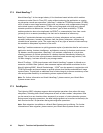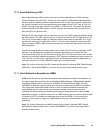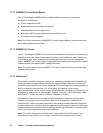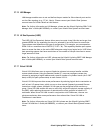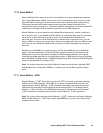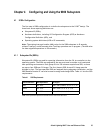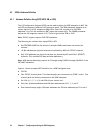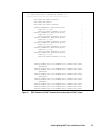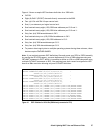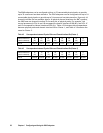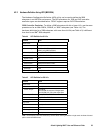52 Chapter 3
Functional and Operational Characteristics
3.7.27 Hitachi Graph-Track™
Hitachi Graph-Track™ (GT) allows users to monitor and collect detailed subsystem
performance and usage statistics for the 9900 subsystem. GT can monitor as many as 32
subsystems on the 9900-internal LAN. GT monitors the hardware performance, cache usage,
and I/O statistics of the attached subsystems and displays real-time and historical data as
graphs that highlight key information such as peaks and trends. GT displays the following
data for each attached subsystem:
Subsystem configuration, including controller name, serial number, controller
emulation, channel address(s), SSIDs, and cache size.
LDEV configuration, including total storage capacity and RAID implementation for each
array domain; hard disk drive capacity, LDEV type (e.g., 3390-3R, OPEN-3), and LDEV IDs
for each array group.
Subsystem usage, including percent busy versus time for the front-end microprocessors
(CHIPs) and back-end microprocessors (ACPs).
Cache statistics, including percent cache in use and percent write-pending data in
cache.
I/O statistics at the subsystem, array group, and LDEV levels: I/O rates, read/write
ratio, read and write hits, backend transfer rates (drive-to-cache and cache-to-drive I/O
rates).
In addition to displaying performance and usage data, Hitachi Graph-Track™ manages the
collection and storage of the GT data automatically according to user-specified preferences.
GT also allows the user to export GT data for use in reports or in other data analysis
programs.
Note: For further information on Hitachi Graph-Track™, please see the Hitachi Lightning
9900™ Hitachi Graph-Track™ User’s Guide (MK-90RD032), or contact your Hitachi Data
Systems account team.



